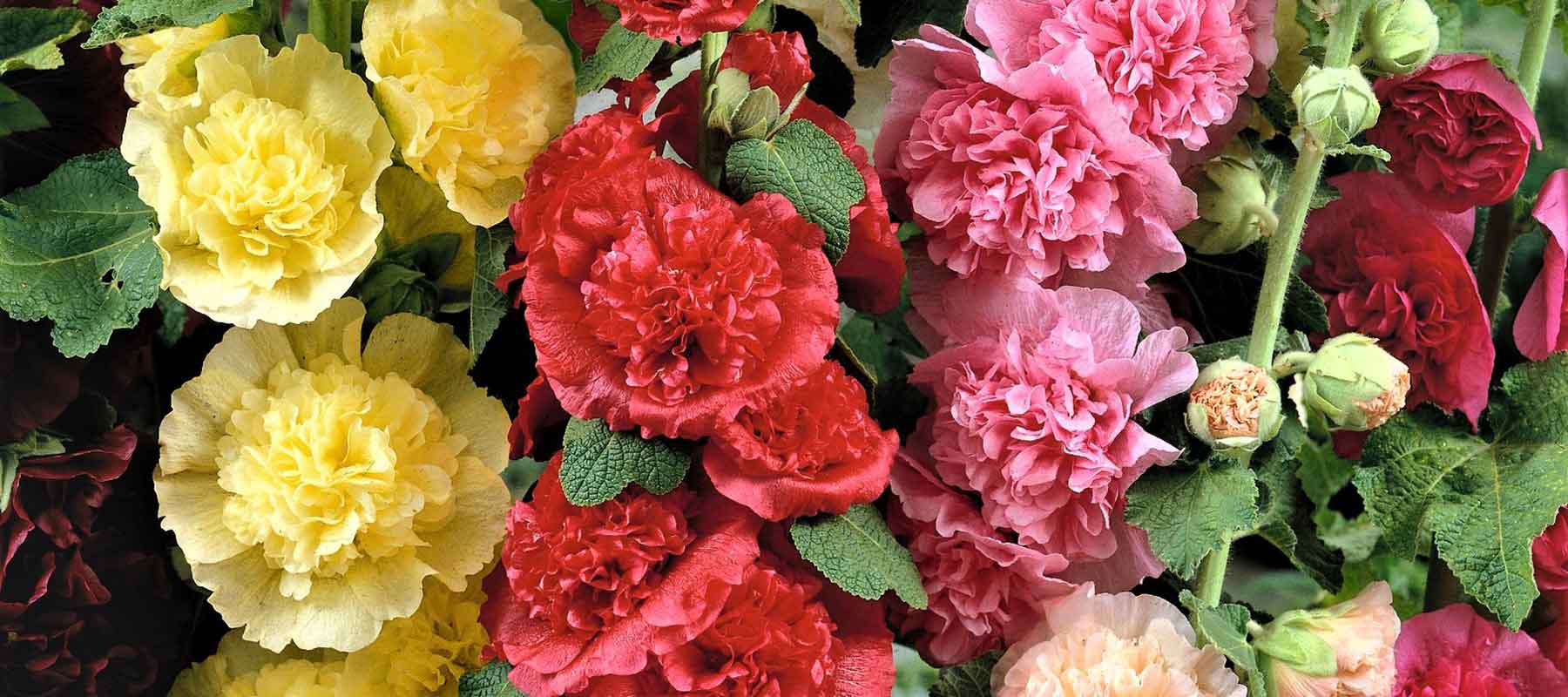About Hollyhocks
A native of Asia Minor, hollyhocks have been cultivated for years for their beautiful blossoms. Seventeenth century pilgrims brought seeds with them to North America, where we continue to grow these lovely flowers today. Hollyhocks are tall, stately biennials or short-lived perennials that inspire awe for their unique flowering style and have become a quintessential cottage garden favorite. Their spires of large, colorful blooms make them excellent for adding vertical interest.
When to Plant Hollyhock Roots
Plant your hollyhock roots in the spring after frosts have passed and the soil can be worked. In warmer zones, plant as early in spring as possible.
Where to Plant Hollyhock Roots
Hollyhocks thrive in full sun, though they can tolerate light shade. Sun exposure encourages robust growth and abundant flowering. Hollyhocks prefer well-drained, fertile soil with a neutral to slightly alkaline pH. Avoid heavy clay or overly wet soils.
Choose a spot protected from strong winds, as their tall stems can be prone to bending or breaking.
How to Plant Hollyhock Roots
Loosen the soil to a depth of 12 to 18 inches. Incorporate compost or well-rotted manure to enrich fertility. Ensure the planting area has good drainage. If needed, mix in sand to improve soil structure.
Dig a hole about three to four inches deep, large enough to accommodate the roots without bending them. Place the root system horizontally in the hole, ensuring the crown is just at or slightly below the soil surface. Cover with soil and tamp lightly to remove air pockets. Water thoroughly after planting to settle the soil, adding more soil if necessary.
New growth should appear within three to four weeks, depending on planting time. Keep in mind that hollyhocks bloom in their second year when planted from roots, so patience is in order. Flowers typically appear in summer and last into early fall.
How to Care for Hollyhocks
It is important to keep the soil consistently moist, especially during dry spells, but avoid waterlogging. As you see growth beginning in the spring, fertilize with a balanced, slow-release fertilizer. Hollyhocks can grow quite tall, so they may require staking. In areas where winds pick up, or are expected, it is important to stake the tall stems to prevent them from falling over.
Hollyhocks are self-seeding and will propagate naturally if seed pods aren’t removed. Removing spent blooms as they fade will encourage more flowers and prevent self-seeding, if desired. Watch for rust, a common fungal disease on Hollyhocks. If you see it, remove infected leaves promptly and apply a fungicide if necessary.
In the fall, cut back the plant after flowering to encourage basal growth for the next season. In colder regions, apply a thick layer of mulch after the ground freezes to protect the roots.
